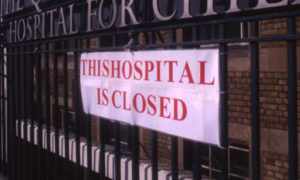U.S News and World report has released its 25th annual list of the top best hospitals in the country. Some on the list are well known hospitals, such as John Hopkins Hospital in Baltimore and Duke University hospital in Durham, North Carolina. However, most of these hospitals are not located in communities of color.
“[O]ur target audience is patients who have particularly complex or challenging medical conditions — not those who need routine hospital care, which may be available at many hospitals that don’t rise to the level of our rankings. For these challenging patients, the choice of hospital carries the highest stakes,” Ben Harder, managing editor and director of healthcare analysis for U.S News & World Report told Medscape Medical News. Some of these complex conditions include cancer, cardiology, and orthopedics.
But according to a 2011 Johns Hopkins University study, people of color and those who are impoverished consistently face poor health outcomes. Lack of access to primary care or physicians within their communities play a major role in this outcome.
New York’s Mount Sinai Hospital, which made this year’s top 20 list and is located in the affluent Upper Eastside of Manhattan, merged with Saint Luke’s hospital in the less well-to-do west Harlem. DNAInfo reported on the merger that caused the closing of the neighborhood’s only pediatric unit. West Harlem has one of the highest rates of childhood asthma and many parents relied on having a pediatric unit close by to visit their sick children.
In January 2014, New York’s Interfaith Medical Center in the Bedford-Stuyvesant region of Brooklyn, was also been facing a financial crisis and closure, until the state pumped emergency funds into it to keep it open. For how long, remains to be seen.
Huron Hospital in East Cleveland closed its doors in 2011. It was the lifeline for the small African-American community it served for over a century, the New York Times reported.
“This problem has been escalating dramatically and is a consequence of a system where health care is a market commodity that is bought and sold by those who can afford it,” says Brian D. Smedley, vice president and director of the Health Policy Institute at the Joint Center for Political and Economic Studies in Washington, D.C, to America’s Wire.
“Those who can afford it get it, and those who can’t struggle to get care, often at a lesser quality. It will escalate as the health care crisis worsens and a population that has higher health care needs and health care problems gets worse and worse and ends up in emergency rooms to get treatment at much greater costs that we all will have to bear.” Smedley added.
In a time of historic health care reform, while America can tout some of the best hospitals and standard of care in the world, many African-American communities are losing hospitals and quality care in their own backyards.
S.C. Rhyne is a blogger and novelist in New York City. Follow the author on Twitter @ReporterandGirl, http://Facebook.com/
